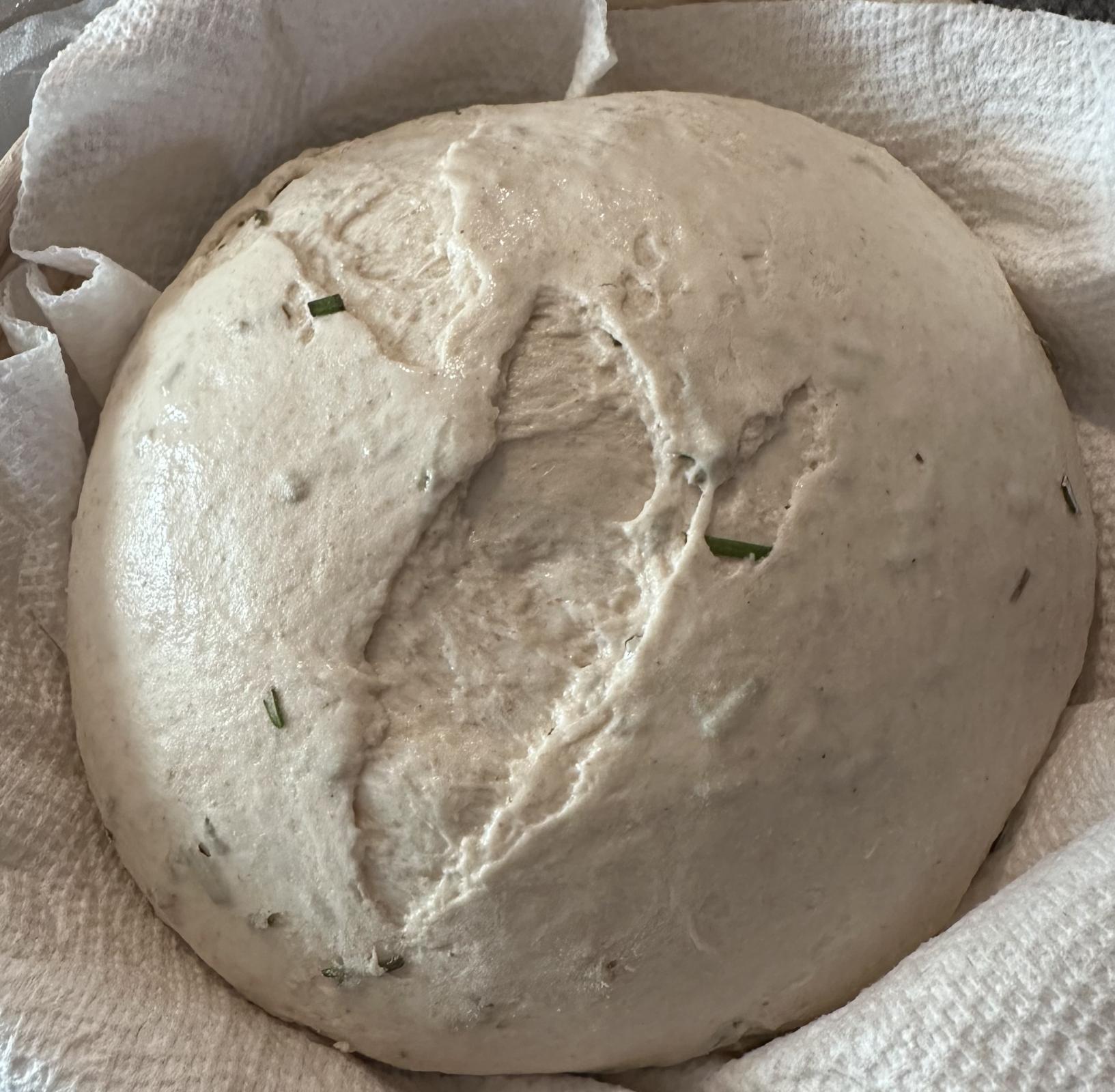
Sourdough Split After Cold Proof

Hi all, I could use your feedback on why the surface of my sourdough boule split after overnight cold proof. This is never happened to me before, but I did do a few things differently:
1) Increased hydration from 550 g to 600 g. I live in Florida, so due to humidity I keep the hydration lower, but, decided to increase at this time to see what happened (the ratio is 740 g of flour, 60 g of whole wheat flour, 600 g of hydration, 360 g of levain).
2) Used different AP flour
3) Added rosemary
4) Shaped two boules rather than three
Fermentation was approximately 5 1/2 hours, which is typical. Although I did find the dough expanded more than what I typically experience after five hours. The image was taken after 10 hour cold proof, still have another three hours or so to go in 40° refrigerator. Thank you for any feedback you can provide!


Tearing like that indicates that the dough's strength was not developed enough, or that its strength had degraded over time, because of protein damage or some other cause. Your times were not especially long so degradation doesn't seem likely to me.
A well developed dough can slump and stretch out like that without tearing. Could you tell us what flour you used before and what flour you used this time?
By dough development I mean kneading, stretching, and similar mechanical action on the dough. How did you develop the dough in this case?
TomP
Hi Tom,
I use the Ken Forkish method, following about 5 - 5 1/2 hours of bulk fermentation, I divide the dough and then do about 4 to 5 folds before placing in basket for overnight proof.
However, this time I added Rosemary. I forgot to add the chopped rosemary near the beginning of fermentation, so I added it when I performed the final shape. Although I simply folded it into the dough along with my typical folds, this could have led to the fight splitting. However, this isn’t the first time I have missed my timing on this, and have not experienced this problem before.
I always use King Arthur flour, but ran out, so had to pitch hit with Pillsbury AP (which could be the culprit).
I have used Pillsbury unbleached AP a number of times and it always performed the same as Gold Medal unbleached AP and King Arthur AP. So unless you used the bleached version I don't think the flour is an issue.
You shouldn't be seeing tears like that at any reasonable level of hydration, even 100% (I've made glass bread at 100% and it doesn't tear).
Just because you did a certain number of folds isn't a guarantee; you need to adjust what and how you do folds depending on what the dough is telling you. Also, It seems unusual to do 4 - 5 folds after dividing, though I might do some serious stretching while making a preform or loaf if the dough seemed very slack and extensible.
It's possible to over-stretch the dough during S&Fs and tear it, and I imagine that might lead to problems later. But you would probably have noticed that happening at the time.
I'm inclined to think that you didn't develop the dough enough, being fooled a little by the high hydration. Can you remember what the dough felt like after the last S&F? I'm mainly asking about elasticity, suppleness, smoothness, and extensibility. If it ended up as a taut, compact ball that wasn't very elastic (springy), it might have been more liable to tear as it relaxed overnight. If the surface was rough or lumpy at that time it might indicate that the dough needed more development.
TomP
Did you use 100% hydration levain? 79% hydration is a lot for AP flour. Especially with high hydration starter, where more gluten is broken down compared to stiff starter. If you insist on doing that hydration, try stiff levain and bassinage
The final feeding of the levain prior mixing with the final dough is 400g AP flour, 100g WW flour, and 400g 85-90 degree water. So, although not 100% hydration, it’s close. It’s the Ken Forkish method.